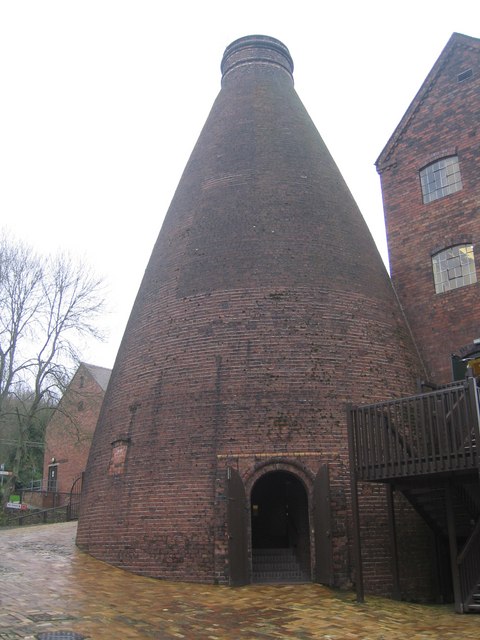The Firing Process

The Firing Process
Temperature and atmosphere plays an important role in the creation of porcelain. Different temperatures and amounts of oxygen can cause variations to occur in claywork.
The first kilns were similar in structure to caves as they were built into the ground. The next development of kilns were ones that went up along the angle of a hill, made flat along the ground, or rose up vertically from the ground in a dome form. These types of kilns are still in use today in certain parts of the world. [1]
Temperature
There are different temperatures that need to be reached depending on the material and the desired end product. In order to create a product, a clayworker would need to control the heat by recording temperature and oxygen levels and managing that heat throughout the process. [2]

Atmosphere: What Effects Pottery in a Kiln?
Kiln Materials
Influences On Firing
It is not just the inside of a kiln that can influence the type of porcelain being created, materials that a kiln is built with can also make an impact. This is more of a change relating to temperature levels and the change that temperature can cause when creating porcelain. Materials, such as refractory bricks, which are hard and dense take time to heat up and cool down. However, they are able to hold the heat temperature longer. In comparison, bricks that are lightweight and insulate both heat and cool quickly. [3]
Oxygen
In Relation to Temperature
The oxygen levels in a kiln, like many other elements, have an effect on the end product of porcelain. In order for a kiln to be working correctly, carbon and oxygen need to come together to combust and create carbon dioxide. This is important because it changes the atmosphere of a kiln into one where heat rises and residing oxides in the clay or glaze can reach what is known as their regular colors. [4]
Reduction
In Relation to Firing
When oxygen is reduced in the kiln either due to a smothered fire or the smoke of the fire becomes strong within the kiln, the kiln begins experiencing reduction. This relates to the oxygen atmosphere, discussed in oxygen, where instead of having the normal combustion where carbon dioxide is created, carbon monoxide is created. This change in atmosphere can cause the coloring of pottery to change to a copper or iron color or in extreme cases of reduction the pottery will be black as pure carbon is created in the fire. [5]
The Chinese noted this difference in atmosphere around the 8th century C.E. [6]
The End Result

Footnotes:
[1] Peterson, Susan and Jan Peterson. The Craft and Art of Clay: A Complete Potter’s Handbook. 5th ed. Great Britain: Laurence King Publishing, 1992: 219.
[2] Peterson, Susan and Jan Peterson. The Craft and Art of Clay: A Complete Potter’s Handbook. 5th ed. Great Britain: Laurence King Publishing, 1992: 214.
[3] Peterson, Susan and Jan Peterson. The Craft and Art of Clay: A Complete Potter’s Handbook. 5th ed. Great Britain: Laurence King Publishing, 1992: 223.
[4] Peterson, Susan and Jan Peterson. The Craft and Art of Clay: A Complete Potter’s Handbook. 5th ed. Great Britain: Laurence King Publishing, 1992: 218.
[5] Peterson, Susan and Jan Peterson. The Craft and Art of Clay: A Complete Potter’s Handbook. 5th ed. Great Britain: Laurence King Publishing, 1992: 218.
[6] Peterson, Susan and Jan Peterson. The Craft and Art of Clay: A Complete Potter’s Handbook. 5th ed. Great Britain: Laurence King Publishing, 1992: 218.